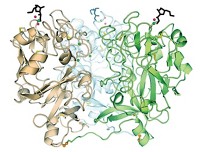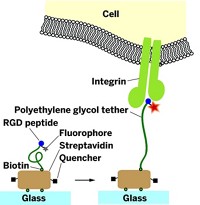Advertisement
Grab your lab coat. Let's get started
Welcome!
Welcome!
Create an account below to get 6 C&EN articles per month, receive newsletters and more - all free.
It seems this is your first time logging in online. Please enter the following information to continue.
As an ACS member you automatically get access to this site. All we need is few more details to create your reading experience.
Not you? Sign in with a different account.
Not you? Sign in with a different account.
ERROR 1
ERROR 1
ERROR 2
ERROR 2
ERROR 2
ERROR 2
ERROR 2
Password and Confirm password must match.
If you have an ACS member number, please enter it here so we can link this account to your membership. (optional)
ERROR 2
ACS values your privacy. By submitting your information, you are gaining access to C&EN and subscribing to our weekly newsletter. We use the information you provide to make your reading experience better, and we will never sell your data to third party members.
Synthesis
Immunity Mechanism Revealed
Receptor findings could aid autoimmune disease studies
by Stuart A. Borman
February 9, 2009
| A version of this story appeared in
Volume 87, Issue 6
Researchers have discovered the role played by a key immune-cell coreceptor. CD22 (orange) is a coreceptor to B-cell receptors (BCRs, blue) on the surface of antibody-generating B-cells. CD22 is known to prevent immune responses. But its mechanism of action has been blocked from scientists' view because it binds to immunogenic glycoproteins with sialic acid groups, both from the surrounding medium and on its own cell surface. The cell-surface interactions tie up CD22's binding site, making it hard to study the effects of external CD22 ligands. Laura L. Kiessling and coworkers at the University of Wisconsin, Madison, have now used antigenic polymers bearing both BCR and CD22 ligands (blue circles and red squares) to promote binding of external CD22 ligands (Proc. Natl. Acad. Sci. USA, DOI: 10.1073/pnas.0807207106). They find that immunogenic ligands that bind CD22 inhibit immune activation—showing that the presence of sialic acid residues on antigens can suppress the immune response. The work could lead to new strategies to prevent autoimmune conditions like multiple sclerosis.








Join the conversation
Contact the reporter
Submit a Letter to the Editor for publication
Engage with us on Twitter